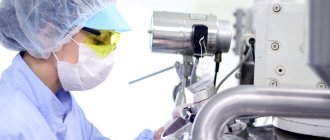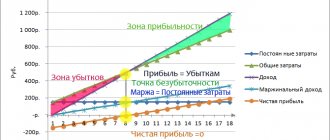Each enterprise must comply with the relevant labor protection standards for two or more workers at the same time. Collective protection means include devices or structures that guarantee this possibility. The safety of life and health of employees is ensured without fail at every enterprise.
Safety must be achieved regarding possible radiation, electrical damage, temperature effects, vibrations, biological, chemical, mechanical factors, noise and much more. Collective protective equipment at the enterprise is developed precisely for this purpose. Such devices are divided into two main groups. Some are designed to ensure the safety of employees while at work, while others serve as shelters in case of emergencies.
Classification of collective protective equipment
VHCs reduce the likelihood or completely prevent personnel from being exposed to occupational factors that pose a health hazard. The products are used to normalize lighting and purify air in work areas. Every enterprise must provide protection against falls from a height, contact with electricity, and biological, chemical and mechanical influences. The temperature range suitable for the body is always maintained. Workers should not be exposed to lasers, ultrasound, vibration, noise, electric fields, as well as infrared, ionizing, electromagnetic, and ultraviolet radiation.
Personal and collective protective equipment - is it possible to save money?
Personal protective equipment at work (PPE) is special clothing and special equipment that employees use to reduce exposure, prevent exposure to and protect against harmful and hazardous production factors, including pollution.
PPE is used for safe work performance, especially in cases where sufficient protection cannot be provided in the proper form. Suppose the workplace design has cramped conditions and there is a chance of getting hurt due to careless lifting of the head.
Either the location of the work is such that it is basically impossible to work without personal protective equipment (respiratory protection), or the work is carried out in conditions of poor visibility and it is necessary to indicate the presence of people in the work area.
Personal protective equipment for workers is intended for personal use only and is not transferable to colleagues and is divided into 12 classes.
Classification of personal protective equipment:
- insulating suits (pneumatic suits, spacesuits, etc.);
- respiratory protection equipment (gas masks, RPE, self-rescuers, etc.);
- special protective clothing (sheep coats, coats, short coats, capes, robes, etc.);
- foot protection equipment (boots, boots, shoes, shoe covers, slippers, etc.);
- hand protection equipment (mittens, gloves, shoulder pads, oversleeves, etc.);
- head protection equipment (helmets, helmets, caps, berets, etc.);
- eye protection (safety glasses, etc.);
- facial protection equipment (face shields, etc.);
- hearing protection equipment (ear protectors, ear buds, helmets, etc.);
- fall protection equipment and other safety equipment (safety harnesses, slings with and without shock absorbers, anchor lines, blocking devices, etc.);
- dermatological protective products (creams, ointments, soaps, etc.);
- combined means (a combination of several means of protection in one).
We invite you to familiarize yourself with the Protection of labor rights of employees.
The employer must provide maximum protection for its employees in order to prevent the development of occupational diseases and accidents at work.
From personal experience, I’ll tell you what to look for when choosing any personal protective equipment, because the catalogs of specialized stores are full of different suits, shoes, and other things, and managers are trying to “sell” their product.
So, initially, before switching from one supplier to another, or you initially choose a counterparty, ask for several samples of suits, safety shoes and other things for testing.
The supplier of personal protective equipment must provide this product free of charge, with subsequent preparation of a test report by you.
You give the received PPE to your employees for use. Usually a week is enough, sometimes a little less, to understand how comfortable it is for employees to work and whether the quality really corresponds to what the manufacturer declared, and whether it will become unusable before the end of the wearing period, for example.
Therefore, the company’s budget in terms of purchasing personal protective equipment is often meager, so it is better to immediately buy the right one.
At many enterprises, there is an overexpenditure of workwear, safety footwear and personal protective equipment during the calendar year due to the purchase of low-quality goods.
For example, as was the case in my practice.
The workers were given suits (I will not mention their name or company) with a fabric density of 215 g/m2. During active use, the wear period was actually 4-6 months, instead of the 12 months of operation required by the standards.
During work, burnouts and multiple tears very quickly appeared on the workwear, which indicated a discrepancy between the quality of the material and the work performed at the enterprise. I'm not saying that the costumes are bad - no! They were simply not suitable for the nature of our business.
Therefore, after analyzing, a proposal was made to the supply department to purchase suits with a higher density (over 245 g/m2) and with a high cotton content (over 50%), which was supposed to contribute to a longer wear period and eliminate unnecessary financial costs.
And so it happened! For the majority of workers, by the end of their wearing period, their workwear was worn out by a maximum of 70-80%. Moreover, the cost of the suits was almost the same, thereby saving the company more than one million rubles.
You can do the same with regard to safety shoes and other personal protective equipment - analyze and test before purchasing large volumes, and then I will analyze what collective protective equipment is and what classes they are divided into.
Collective protective equipment at work (CPS) is a device and structure that allows you to protect a large number of workers from the effects of harmful and dangerous production factors, harmful substances, and contaminants.
That is, unlike PPE, it affects all production employees immediately en masse, and not personally, depending on whether the employee has “rubber boots” or not.
- 1. Devices for normalizing the air environment of industrial premises and workplaces.
These are devices that maintain optimal barometric pressure, sufficient air purification, air conditioning and ventilation in the work area, heating and air deodorization.
- 2. Devices for normalizing lighting of industrial premises and workplaces.
These devices include light sources, lighting fixtures, light openings, light-protective devices and light filters that provide illumination in the workplace at a level that complies with the standards.
- 3. Means of protection against increased levels of ionizing radiation.
To safely carry out work near ionizing radiation, protective, warning, sealing devices, protective coatings, devices for trapping and purifying air and liquids, decontamination devices, automatic control devices, and remote control devices are used.
Also, protective equipment is required during transportation and temporary storage of radioactive substances, and, of course, safety signs and containers for radioactive waste.
- 4. Devices for protection against increased levels of infrared radiation.
To protect employees from infrared radiation above the standard level, it is necessary to use protective, sealing, heat-insulating devices, as well as provide sufficient ventilation and automatic control devices, alarms, remote control, as well as safety signs.
- 5. Protection from low or high levels of ultraviolet radiation.
Security will be helped by fencing, sealing, heat insulating, ventilation, automatic control and alarm devices, remote control and safety signs.
- 6. Devices against increased levels of electromagnetic radiation.
They are fencing, ventilation, automatic control and alarm devices, remote control and safety signs.
- 7. Devices against increased intensity of magnetic and electric fields.
They include fencing and sealing devices, protective coatings, automatic control and alarm devices, remote control and, of course, safety signs.
- 8. From increased levels of laser radiation.
Likewise, for all of the above dangerous radiations, to protect workers from harmful factors, it is necessary to use protective, sound-insulating, sound-absorbing devices, noise mufflers, automatic control and alarm devices, and remote control.
- 9. Remedies for increased noise levels.
To reduce the impact of harmful and dangerous factors, it is mandatory to use protective devices, soundproofing, sound-absorbing devices, noise mufflers, automatic control and alarm devices, and remote control.
- 10. Means of protection against increased levels of vibration (general and local).
To reduce the impact of vibration on the human body, protective devices, vibration-isolating, vibration-damping and vibration-absorbing devices, automatic control and alarm devices, and remote control are used.
- 11. Protection devices against increased levels of ultrasound.
These devices include fencing, soundproofing, and sound-absorbing devices, as well as automatic control and alarm systems, and remote control.
- 12. Remedies for increased levels of infrasonic vibrations.
If the level of infrasonic vibrations is high, fencing devices and safety signs are used
- 13. From electric shock.
These are fencing devices, automatic control and alarm systems, insulating devices and coatings, protective grounding and grounding devices, automatic shutdown devices, etc.
- 14. From increased levels of static electricity.
Includes grounding and humidifying devices, neutralizers, anti-electrostatic agents and shielding devices.
- 15. Means of protection against elevated or low temperatures of the surfaces of equipment, materials, and workpieces.
These are devices: fencing, automatic control and alarm, thermal insulating, remote control.
- 16. From increased or decreased air temperatures and temperature changes.
These are fencing devices, automatic control and alarm, thermal insulation, remote control, for heating and cooling.
- 17. Means of protection against mechanical factors.
They include devices: protective, braking, automatic control and alarm, safety and remote control, and, of course, safety signs.
- 18. Means of protection against exposure to chemical factors.
These are protective means for protecting workers, automatic monitoring and alarms, sealing, providing the necessary ventilation and air purification, as well as the removal of toxic substances, remote control and safety signs.
- 19. Devices for protection against exposure to biological factors.
These are equipment and preparations for disinfection, disinfestation, sterilization, deratization, fencing devices, ventilation and air purification and safety signs.
- 20. Devices for protection against falls from a height. These include barriers, safety nets and safety signs.
We invite you to familiarize yourself with Lunch breaks for a 12-hour working day
Air and lighting safety
Collective protective equipment includes devices for ventilation, air conditioning, deodorization, maintaining barometric pressure, alarms, and autonomous airspace control. VS for normalizing the visual environment in work areas are lighting openings, lanterns, spotlights, and protective devices.
Requirements for the selection of protective equipment
Taking into account the requests of a particular production, the types of collective protective equipment are selected. They must clearly perform their intended function and protect workers from harmful effects to health or life associated with this production. Collective protective equipment should not itself be a source of danger or harmful effects, be permanently connected to the premises of the enterprise, have an aesthetic appearance, and comply with ergonomic rules.
They must be related to the control of the production process, i.e., when the equipment is connected, the protective equipment is automatically turned on. In case of any problems with equipment in production, these mechanisms must have a separate connection. Such equipment must be located so that in the event of a breakdown, a repair team can approach it, and it is convenient to check and monitor the operation of the devices.
Exposure to infrared, electromagnetic, ultraviolet radiation, noise and current
Collective protection means include fencing, warning, sealing devices, protective coatings, devices for cleaning liquids or air, decontamination, sealing, automatic control, control at a certain distance, devices for storing or moving radioactive elements, containers, safety signs. Noise is suppressed thanks to special technology, soundproofing and absorbing coatings. To protect personnel from electric shocks, insulating materials, grounding, control, alarm and automatic shutdown devices are used.
Exposure to static electricity and temperatures
Collective protection means include moisturizing, grounding, shielding devices, neutralizers and anti-electrostatic substances. SPS against low or high temperatures of equipment and air are devices for heating or cooling, signaling, remote control, automatic control, fencing and thermal insulating devices. Mechanical, chemical influences, as well as biological factors are also subject to maximum neutralization.
Occupational Safety and Health
COLLECTIVE PROTECTION MEANS Collective protection means for workers include means that are structurally or functionally associated with the production process or equipment. They are generally designed to protect any worker in the work area.
1. Means of collective protection of workers from mechanical injury
The means of collective protection of workers from mechanical injury (physical hazard) include fences (casings, canopies, doors, screens, shields, barriers, etc.), safety - locking devices (mechanical, electrical, electronic, pneumatic, hydraulic, etc. .d.), braking devices (working, parking, emergency braking), signaling devices (sound, light), which can be built into the equipment or be components.
To ensure the safe operation of production equipment, it is equipped with reliably operating braking devices that guarantee stopping the machine at the right time, alarms, fencing and blocking devices, emergency shutdown devices, remote control devices, and electrical safety devices.
Braking devices can be mechanical, electromagnetic, pneumatic, hydraulic and combined. The braking device is considered to be in good working order if it is established that after the equipment is turned off, the run-out time of dangerous parts does not exceed those specified in the regulatory documentation.
An alarm system is one of the links in the direct connection between a machine and a person. It facilitates labor, rational organization of the workplace and work safety. The alarm can be sound, light, color and symbol. The alarm must be located and constructed so that the danger signals are clearly visible and audible in the work environment by all persons who may be at risk.
Locking devices are designed to automatically shut down equipment in the event of erroneous actions by the operator or dangerous changes in the operating mode of the machines, when information is received about the presence of a danger of injury through the existing sensitive elements in a contact and non-contact manner.
| Locking devices |
| Mechanical | Jet | Electro-mechanical | Contactless | Electrical |
| Based on the principle of breaking the kinematic chain. | When a working hand crosses a jet of air flowing from a controlled nozzle, a laminar jet between other nozzles is restored, switching a logical element that transmits a signal to stop the working element | Based on the principle of interaction between a mechanical element and an electrical element, as a result of which the machine control system is turned off. | Based on the photoelectric effect, ultrasound, changes in the amplitude of temperature fluctuations, etc. Sensors transmit a signal to the executive bodies when workers cross the boundaries of the equipment working area | Disconnection of the circuit leads to an instant stop of the working bodies |
Safety devices are designed to prevent a person from accidentally entering a dangerous area. They are used to insulate moving parts of machines, processing areas of machine tools, presses, impact elements of machines, etc. Fencing devices can be stationary, mobile and portable. Protective devices can be made in the form of protective covers, doors, canopies, barriers, screens.
The design of production equipment driven by electrical energy must include devices (means) to ensure electrical safety.
For electrical safety purposes, technical methods and means are used (often in combination with one another): protective grounding, grounding, protective shutdown, potential equalization, low voltage, electrical separation of the network, insulation of live parts, etc. Electrical safety must be ensured:
- design of electrical installations;
- technical methods and means of protection;
• organizational and technical measures. Electrical installations and their parts must be designed in such a way that workers are not exposed to dangerous and harmful effects of electric current and electromagnetic fields, and comply with electrical safety requirements.
To ensure protection against accidental contact with live parts, the following methods and means must be used:
- protective shells;
- protective barriers (temporary or permanent);
- safe location of live parts;
- insulation of live parts (working, additional, reinforced, double);
- workplace isolation;
- low voltage;
- protective shutdown;
- warning alarms, lockouts, safety signs.
To provide protection against electric shock when touching metal non-current-carrying parts that may become live as a result of insulation damage, the following methods are used:
- protective grounding;
- zeroing;
- potential leveling;
- protective wire system;
- protective shutdown;
- insulation of non-current-carrying parts;
- electrical network separation;
- low voltage;
- insulation control;
- compensation of ground fault currents;
- individual protection means.
Technical methods and means are used separately or in combination with each other so that optimal protection is ensured.
Electrostatic intrinsic safety must be ensured by creating conditions that prevent the occurrence of static electricity discharges that can become a source of ignition of protected objects. To protect workers from static electricity, you can apply antistatic substances to the surface, add antistatic additives to flammable dielectric liquids, neutralize charges using neutralizers, humidify the air to 65-75%, if this is permissible under the conditions of the technological process, remove charges by grounding equipment and communications.
Collective protective equipment includes industrial safety signs, signal colors and signal markings. GOST R 12.4.026-2001
“SSBT. Signal colors, safety signs and signal markings" establishes terms with appropriate definitions for a correct understanding of their purpose, the rules of application and characteristics of safety signs, signal colors and signal markings. The scope of the new standard has been expanded, the number of groups (from 4 to 6) and the number (from 35 to 113) of basic safety signs has increased, and a new geometric shape of signs has been established - a square. The use of signal colors, safety signs and signal markings is mandatory for all organizations, regardless of their form of ownership. The use of safety signs, signal colors and markings should not replace the implementation of organizational and technical measures to ensure safe working conditions, the use of collective and individual protective equipment, and training in safe work performance.
Industrial safety signs, signal colors and markings are aimed at attracting a person's attention to immediate danger.
Industrial safety signs can be basic, additional, combined or group. The main signs must contain an unambiguous semantic requirement to ensure safety and perform prohibiting, warning, prescriptive or permitting functions in order to ensure labor safety. Additional signs contain an explanatory inscription and are used in combination with the main signs. Basic signs can be intended for production equipment (machines, mechanisms, etc. and located directly on the equipment in the danger zone and the employee’s field of view) and production premises, facilities, territories, etc. Safety signs must be clearly visible, not distract attention, not interfere with work, not interfere with the movement of goods, etc.
Signal colors are used to indicate:
- surfaces, structures, devices, components and elements of equipment, machines, mechanisms, etc., which are sources of danger to people;
- protective devices, fences, interlocks, etc.;
- fire equipment, fire protection equipment and their elements;
- etc.
Signal markings are used in places of danger and obstacles; they are performed on the surface of building structures, elements of buildings, structures, vehicles, equipment, machines, mechanisms, etc. Initial placement and dimensions of safety signs on equipment, machines, mechanisms, etc., painting of units and elements of equipment, machines, mechanisms, etc. and the application of signal markings on them is carried out by the manufacturer, and during operation - by the organization operating them.
Fire-technical products
Personal and collective protective equipment for workers during fires must be available at every enterprise. According to the relevant order of the Ministry of Internal Affairs, employees have the right to gain access to devices and structures to ensure group safety, as well as special technical devices to prevent fire or maintain life. The safety of people must be maintained while firefighting efforts are being carried out and their health is at risk. Building designs must include fire walls, shelters, windows, doors, as well as locations for fire extinguishing equipment and personal protection for enterprise employees.
Requirements for VCS in production
Personal protective equipment for workers
In production, there are certain legal requirements for such items and structures. Regular protective items must be in proper condition and not lose their properties, and be maintained in sufficient quantities.
Illustration of typical structures for ensuring collective security
In addition, it is not allowed to use items that have expired, and in the case of buildings and structures - with obvious signs of unusability. Automatic systems must be checked on an ongoing basis.
Important! Ventilation shafts must be cleaned in accordance with maintenance schedules, and the premises must have a set of additional means of protecting the population in a standard quantity.
Means of collective defense against weapons of mass destruction
VCS are engineering structures designed to protect the population. These are the most reliable means of protecting citizens in the event of the use of offensive means, the consequences of which are widespread. Anti-radiation shelters can be used as a shelter.
Means of collective protection against weapons of mass destruction prevent the effects of harmful gases, biological and other toxic substances, high temperatures, and the consequences of nuclear explosions. Such shelters provide several rooms to accommodate people and equipment, as well as ventilation chambers, bathrooms, medical rooms, storerooms, power units and water extraction areas. For the most part, such projects have several exits, closed by an absolutely sealed hatch or door. They are always located in areas where the possibility of collapse is excluded. Capacious structures include vestibules and shafts.
Classification
In the broadest sense, VHCs are divided into:
- Purpose built structures.
- Structures that have been retrofitted (adapted) for shelters or shelters.
- The simplest shelters.
Specially built structures to protect the population include radiation shelters and civil defense shelters.
Adapted or retrofitted shelters include various urban and suburban infrastructure facilities suitable for protecting the population. Natural cavities, mine workings, subways (the most common type), underground passages and transport tunnels are equipped for shelters and shelters. Basements of residential and non-residential buildings, as well as other objects of underground urban space, are equipped with reinforced and anti-radiation shelters.
Ventilation
Air supply to the VCS occurs in several modes. Clean ventilation as well as filtration is possible. Restoration of oxygen reserves and the function of complete isolation are provided in shelters built in areas with a high probability of fire. The supply systems for electricity, water, heating, and sewerage are connected to external networks.
The shelters are equipped with portable backup devices in case of malfunction of the main stationary ones, as well as containers for storing water and collecting waste. Heating is carried out through the operation of heating networks. All shelters must be equipped with fire extinguishing equipment, reconnaissance equipment, protective clothing and spare tools.
Exposure to radiation
Personal and collective protective equipment for workers when an area is contaminated with radiation prevents exposure to ionizing, light radiation, as well as neutron flux, provides shelter from the shock wave, and avoids the entry of toxic and biological substances into the body. For the most part, such shelters are installed in basements. The possibility of quickly constructing shelters from reinforced concrete elements, timber, bricks, stones and even brushwood cannot be ruled out.
All kinds of buried rooms can be converted into anti-radiation shelters. These include cellars, caves, basements, underground workings, and storage for vegetables. The main characteristic of collective protective equipment of this type is the fairly high strength of the walls.
Increasing the security of the premises
To do this, window and unused doorways are sealed, and a layer of soil is laid on the floors. If necessary, external backfilling of walls protruding above the ground is carried out. Collective protective equipment at the enterprise is specially sealed. Slots, holes or cracks in ceilings and walls, at the outlets of wiring and heating pipes, as well as on window slopes are sealed. The doors are covered with felt or some other dense fabric.
Exhaust and supply ducts are designed for ventilation of rooms with a small area. In buildings adapted for shelter, but not equipped with a water supply system, liquid containers are installed at a rate of 4 liters per person per day. The bathroom is equipped with a cesspool. A portable container or dry closet can be installed. Sun beds, benches and food caches are also installed. An external electrical network provides lighting for such premises.
Retrofitting basements
The safety properties of each collective protective equipment, the use of which, according to the plan, should provide shelter from radiation, can be increased many times due to additional equipment. After the shelter commandant gives the appropriate orders, all sealed doors, emergency exits, and ventilation plugs are closed. The air filtration system is activated. If toxic or noxious substances enter, each shelter occupant must immediately put on personal respiratory protection.
If possible, it is necessary to activate the oxygen filtration unit if there is a fire near the shelter or if there is too much concentration of potent poisons. You will first need to put the shelter into complete isolation mode. Many people think that gas masks are considered collective means of protection. These are individual devices intended for personal use, which should be equipped with each shelter. After the harmful substances have evaporated from the shelter, gas masks can be removed.
Air cleaning
We have already figured out which structures are classified as means of collective protection, now let's find out how normal living conditions are maintained in them. While a person can survive for some time without food and water, he cannot survive without air. Therefore, supplying clean air to the shelter is the most important task in ensuring its habitability.
The air entering the collective protective equipment of workers, military personnel and the general population must be cleaned of mechanical impurities, bacterial agents, as well as radioactive and chemical substances hazardous to humans. For these reasons, stationary shelters are equipped with special filters.
The air is cleaned from mechanical impurities and dust using oil filters of the FYAR type (unified cell filter) and self-cleaning filters of the KD-10 or KD-20 type. It is cleaned from coarse fumes by packaged prefilters of the PFP-100 type. When passing through the filter, mechanical particles settle on an oil-lubricated mesh or filter bag. Periodically clogged filters are replaced with clean ones. In self-cleaning filters, the oil is changed, and in pre-filters, filter bags are changed. The level of filter clogging is reflected by their aerodynamic resistance, measured in millimeters of mercury.
The design of the FNR is quite simple - a box-shaped body in which 12 metal corrugated meshes are installed. PFP-1000 is not much more complicated - a housing with a filter package. The filter package consists of 4 cassettes. Each cassette is a rectangular metal frame in which folded filters made of a special material are fixed.
The pre-filter works in this way: clogged air is supplied to the housing through the inlet, cleared of dust, smoke and fog by passing through the filter sections, and finally exits through the outlet into the pipeline. Through the pipeline, air is supplied to absorbent filters, in which the next stage of cleaning occurs.
Absorber filters clean the air from radioactive dust, bacterial aerosols, toxic fumes and other toxic substances. For this purpose, filters of the FP type, models “50/25”, “100/50”, “200” and “300”, as well as the FPU type, models “200” and “300” are used. Today, the production of environmental filters of the FE type has also been established, which purify the air from sulfur oxides, hydrogen sulfide vapors, hydrogen chloride, chlorine, dichloroethane, alcohols, phosgene and various aerosols.
The shelter, which is classified as a collective means of protecting the population, has bathrooms, catering facilities and other auxiliary premises. In these rooms, special filters with increased capabilities are used. For example, marine mine filters (MSF) are installed in the ventilation systems of bathrooms. They purify the air from hydrogen sulfide vapor, nitrogen oxides, sulfur dioxide, methanol and other substances.
Simple shelters
What means of collective protection can be classified as the simplest? These are open or covered gaps that can be constructed using available materials. The protective properties of the simplest shelters are very reliable. Thanks to their use, penetrating radiation, shock waves, and light radiation cause less damage. The level of radiation and the effect of biological and toxic substances on the skin is reduced.
Slots are built in areas where the possibility of blockages or flooding by rain and melt water is excluded. First, open structures are created. These are trenches in the form of a zigzag, consisting of several sections more than 15 meters in length. The depth is up to 2 meters, and the width is approximately 1 meter. This shelter is designed for 50 people. Before constructing a gap, it is necessary to mark its plan on the ground.









